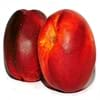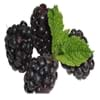Health Benefits
Arthritis prevention, Asthma treatment, Cancer prevention, Kidney stone treatment, Liver health
Asthma treatment, Heart care, Prevents constipation, Treatment of skin Diseases
General Benefits
Anti oxidant properties, Boosts immune system, Cures cough, Eye care, Fights against infections, Helps in weight loss, Improves eye vision, Maintains healthy cholesterol level, Treatment of common cold
Boosts immune system, Controls blood pressure, Eye care, Helps in weight loss
Skin Benefits
Anti-aging benefits, Brightens and lightens complexion, Reduces wrinkles, Treatment of dark spots
Brightens and lightens complexion, Heals sunburn, Reduces wrinkles, Skin rejuvenation, Treatment of acne, Treatment of dark spots, Treatment of skin diseases
Hair Benefits
Prevents hair loss, Protects hair, Regulates hair growth, Treatment of dandruff
Prevents hair loss, Promotes longer and healthier hair, Treatment of dandruff
Allergy Symptoms
Abdominal pains, Breathing difficulty, Decrease in blood pressure, Diarrhea, Dizziness, Eczema, Hives, Lightheadedness, Nausea, Runny nose, Sneezing, Swelling of mouth, tongue or lips, Vomiting, Wheezing
Abdominal pains, Anaphylaxis, Breathing difficulty, Itching in tongue and other parts of mouth, Itching sensation in throat, Swelling of mouth, tongue or lips, Vomiting
Side Effects
Allergic reaction
Allergic reaction, Diarrhoea, Skin rash, Possibly unsafe during pregnancy
Best Time to Eat
As a snack in the late afternoon, Eat the fresh ones, avoid mixing with any other foods, don't eat after meal., Morning time (before lunch), Strictly avoid empty stomach
Any time except an hour after meal, Don't consume at night and before bed
Vitamin B5 (Pantothenic Acid)
Vitamin C (Ascorbic Acid)
Vitamin K (Phyllochinone)
Calories in Fresh Fruit with Peel
Not Available
Calories in Fresh Fruit without Peel
Not Available
Calories in Frozen Form
Not Available
Not Available
Type
Citrus, Tree fruit
Tropical
Season
All seasons
Spring, Summer, Winter
Varieties
Duncan, Marsh and Oro Blanco
Zhong Hua, Jing Li, Ruan Zao, Mao Hua and Huang Yan
Inside Color
Creamy Yellow
Green
Texture
Succulent
Succulent
Taste
Tart
Sour-Sweet, Tangy
Soil Type
Loam, Well-drained
Well-drained
Climatic Conditions
Humid, Warm
Cold, Sunny
Facts about
- February is known as National Grapefruit Month.
- It is called as state fruit of texas.
- No mechanical devices are used while picking grapefruits, they are always handpicked.
- The name Kiwi is due to the resemblance with 'Kiwi' bird.
- Animals like monkeys and deer also consume Kiwifruit.
- Originated in china, this fruit is also called as 'Chinese gooseberry.'
Other Countries
Argentina, India, Israel, Mexico, South Africa, Sudan, Thailand, Turkey, United States of America
Chile, France, Greece, Iran, Japan, New Zealand, Portugal, Turkey, United States of America
Top Importer
Europe
United States of America
Top Exporter
United States of America
New Zealand
Botanical Name
Citrus paradisi
Actinidia deliciosa
Synonym
Not Available
Not Available
Subkingdom
Tracheobionta
Tracheobionta
Division
Magnoliophyta
Magnoliophyta
Class
Magnoliopsida
Magnoliopsida
Subclass
Rosidae
Dillenhidae
Order
Sapindales
Ericales
Family
Rutaceae
Actinidiaceae
Species
C. × paradisi
A. deliciosa
Generic Group
Citrus fruit
Kiwi
Difference Between White Grapefruit and Green Kiwi
We might think that White Grapefruit and Green Kiwi are similar with respect to nutritional value and health benefits. But the nutrient content of both fruits is different. White Grapefruit and Green Kiwi Facts such as their taste, shape, color, and size are also distinct. The difference between White Grapefruit and Green Kiwi is explained here.
The amount of calories in 100 gm of fresh White Grapefruit and Green Kiwi with peel is Not Available and 61.00 kcal and the amount of calories without peel is 33.00 kcal and Not Available respectively. Thus, White Grapefruit and Green Kiwi belong to Low Calorie Fruits and Low Calorie Fruits category.These fruits might or might not differ with respect to their scientific classification. The order of White Grapefruit and Green Kiwi is Sapindales and Ericales respectively. White Grapefruit belongs to Rutaceae family and Green Kiwi belongs to Actinidiaceae family. White Grapefruit belongs to Citrus genus of C. × paradisi species and Green Kiwi belongs to Actinidia genus of A. deliciosa species. Beings plants, both fruits belong to Plantae Kingdom.









